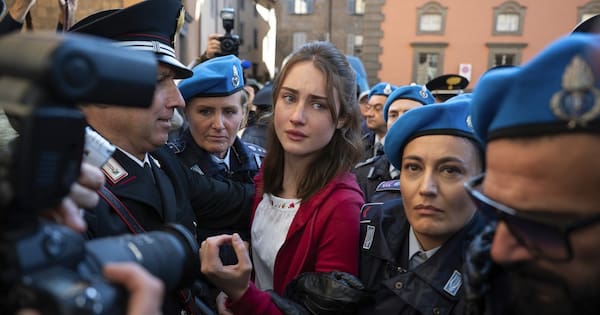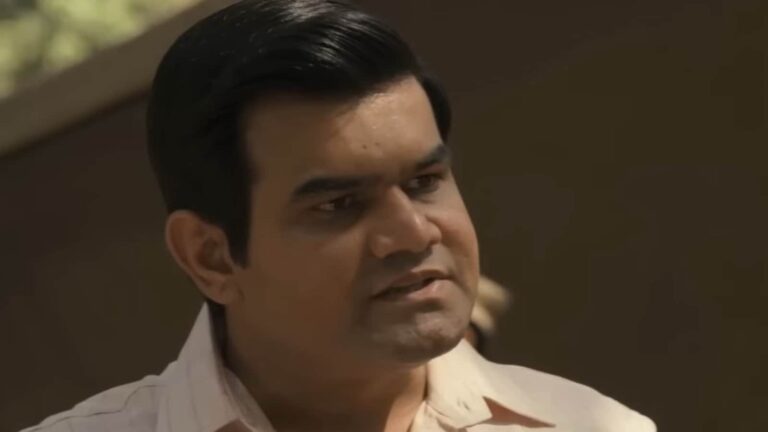Monica Lewinsky’s Role in Amanda Knox’s Journey to Reclaim Her Story

Monica Lewinsky understands the experience of having your identity overshadowed by how others interpret your narrative. Nearly three decades ago, her affair with President Clinton during her internship at the White House thrust her into the global spotlight.
When Lewinsky came across Amanda Knox’s desire to adapt her memoir for the screen, she felt uniquely equipped to assist. Knox, who was studying in Italy in 2007, became a prime suspect in the murder of her roommate Meredith Kercher.
The case stirred significant media frenzy, branding Knox as “Foxy Knoxy.” Initially sentenced to over 20 years in prison, Knox and her boyfriend Raffaele Sollecito were later exonerated after a lengthy legal battle.
Having shared her story in two memoirs and witnessed dramatizations of her ordeal—including a Lifetime movie—Knox felt it crucial to convey the real issues surrounding miscarriages of justice. “I have a story to tell because I have a mission, and my mission is to help people appreciate what really is going on when justice goes awry,” Knox explained when discussing her partnership with Lewinsky on “The Twisted Tale of Amanda Knox.”
Knox noted that Lewinsky’s experience, which had turned her into a mere punchline, inspired her. “This woman, who has gone through her own version of hell…made me feel like maybe there was a path forward in my life,” Knox shared.
The series is currently available on Hulu, featuring Grace Van Patten in the lead role. Both Knox and Lewinsky served as executive producers.
Shared but different trauma
Initially, Lewinsky wasn’t prepared to help others with their narratives, as she was still reeling from her own. Noticing Knox’s case sparked a distant memory, she admitted, “I was allergic to cases like this,” feeling overwhelmed by her own past.
Having just completed graduate school in late 2006, 2007 was particularly tough for her. “I believed graduate school would lead to a new beginning…but the realization that this was not going to happen was pretty devastating.”
After writing a personal essay for Vanity Fair in 2014, Lewinsky found purpose in educating others about cyberbullying and public shaming through her documentary and TED Talk titled “The Price of Shame.” She now hosts a podcast called *Reclaiming with Monica Lewinsky*, focusing on impactful conversations.
By the time their collaboration started on “The Twisted Tale,” Lewinsky was protective. As a woman fourteen years her senior, she expressed concern for how Knox would react while revisiting their painful experiences. “I worried that Knox would be traumatized by reading the first script,” she explained.
Surprising them both, Knox adapted better and they realized their triggers differed significantly. Lewinsky chuckled, saying, “Amanda’s a lot more agreeable than me.”
The interrogation was key
A crucial aspect Knox wanted depicted accurately was the interrogation scene, labeling it “the worst experience of my life.” Knox was interrogated for 53 hours across five days, a detail she felt wasn’t fully captured in the retelling.
As an advocate for criminal justice reform, Knox aims to draw attention to the harsh realities behind closed doors. She was pressured into signing a confession without fully understanding it, adding that she wasn’t fluent in Italian and lacked legal representation during that time.
In that confession, she misidentified a local bar owner as the murderer, a mistake that continues to haunt her, leaving her with a lingering slander conviction. Knox’s lawyers are now seeking to appeal this decision.
Knox believes interrogations need more visibility, as coerced confessions from innocent individuals continue to be a major issue. “I wanted to shed light on that,” she stated.
No villains in Knox’s version
Since her release, Knox has traveled back to Italy three times, including a meaningful meeting with the prosecutor of her case after years of correspondence. Showrunner KJ Stenberg shared that their extensive written exchanges provided valuable details for a pivotal reunion scene in the series.
The narrative explores more than just Knox’s hardships; it also delves into her decision to return to Italy, encouraging viewers to understand the context behind that choice. “The story is not just about the bad things that happened to Amanda, but also why she made that choice,” Knox emphasized.
The series gives voice to various perspectives—from Sollecito’s to that of a prison chaplain and Knox’s mother—illuminating the complex dynamics surrounding the investigation. It doesn’t aim to portray villains but instead invites the audience to empathize with everyone involved. “I wanted the audience to think, ‘I can relate to every single person in this perfect storm,’” Knox asserted, mentioning it was vital to avoid repeating the harm done to her.
The narrative also doesn’t present Knox as flawless. “Neither Amanda nor I were interested in creating a glorified version of her life,” Stenberg remarked.
Knox’s harsh return to life after prison

Adjusting to life after her release wasn’t easy for Knox, a challenge highlighted in the series. “I found it difficult to interact normally with others,” she admitted. Even when she returned to school, some students took unkind photographs of her during class.
This situation soon transformed into a persistent stigma, creating ongoing challenges in her life. Van Patten remarked that many overlook the hurdles exonerees must face when reintegrating into society, often still feeling the effects of their past experiences.
“I learned that my circumstances have both pros and cons,” Knox said, reflecting on her interactions with other exonerees who managed to move on without sharing their pasts at every turn.
“In my situation, I never had that choice,” she expressed. Today, Knox finds fulfillment as a married mother of two. “I was only 22 when I was handed a 26-year prison sentence, and each day with my children reminds me of what could have been,” she shared.
“I don’t care if I’m tired and overwhelmed; these moments are what life is truly about.” Given the powerful narratives intertwined between Lewinsky and Knox, how do you perceive the ongoing effects of such public scrutiny on individual lives?





